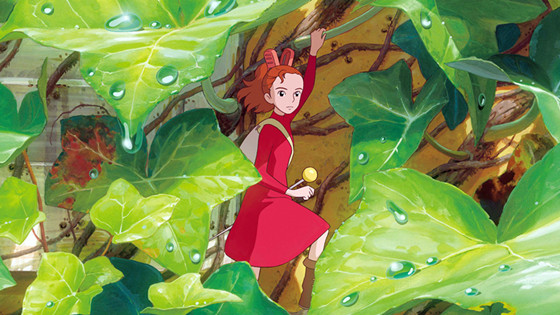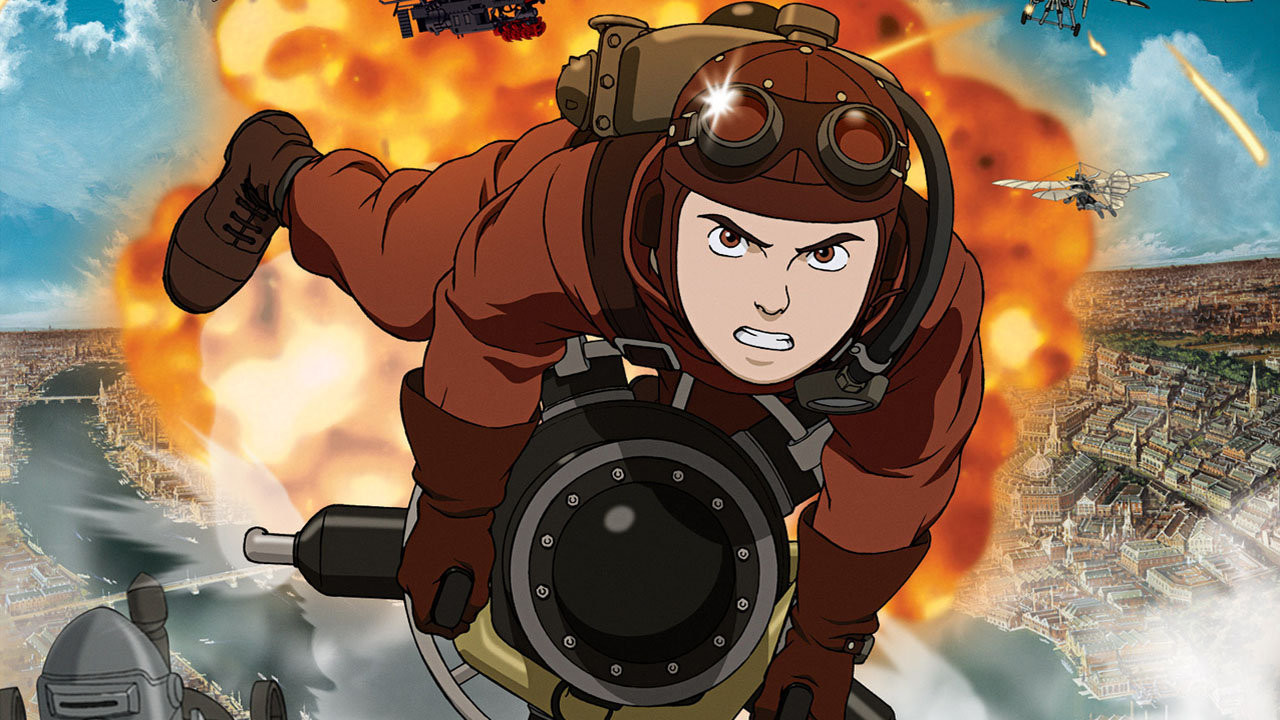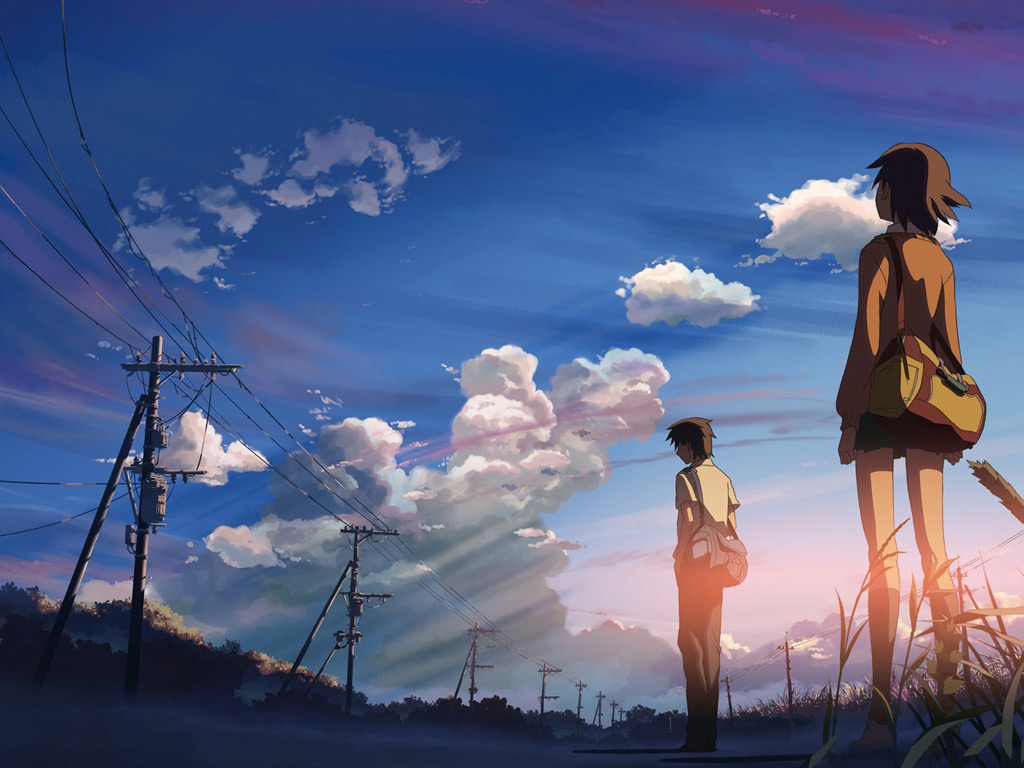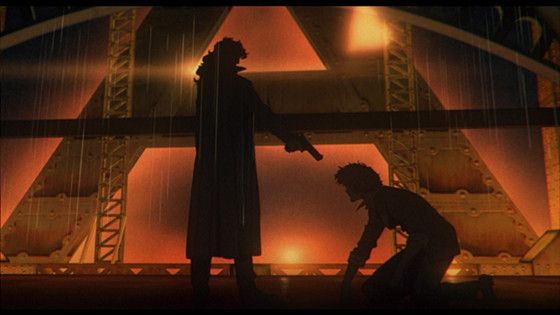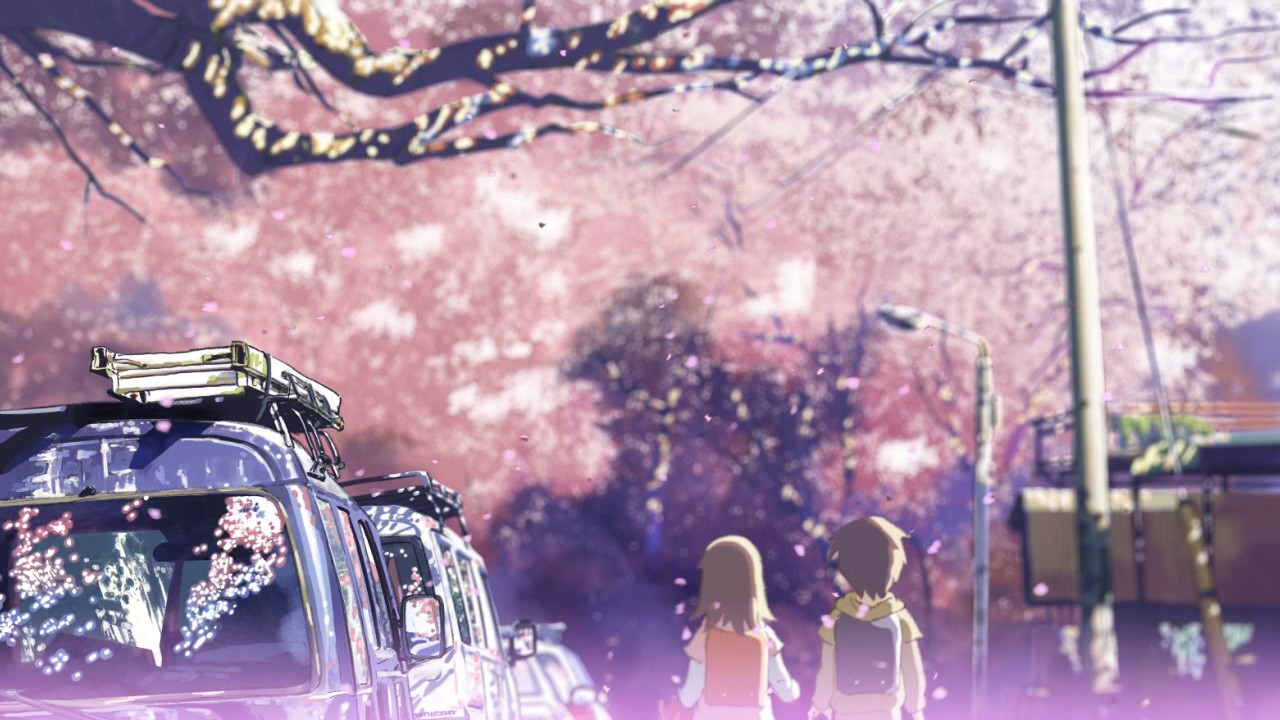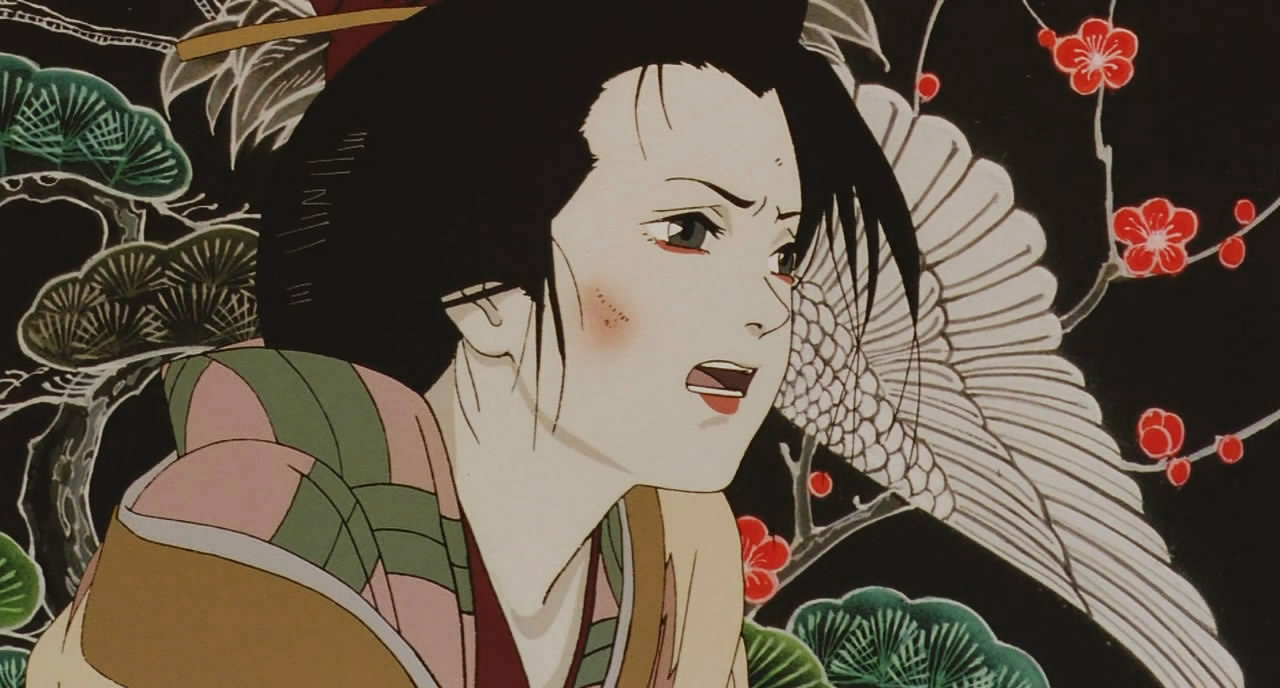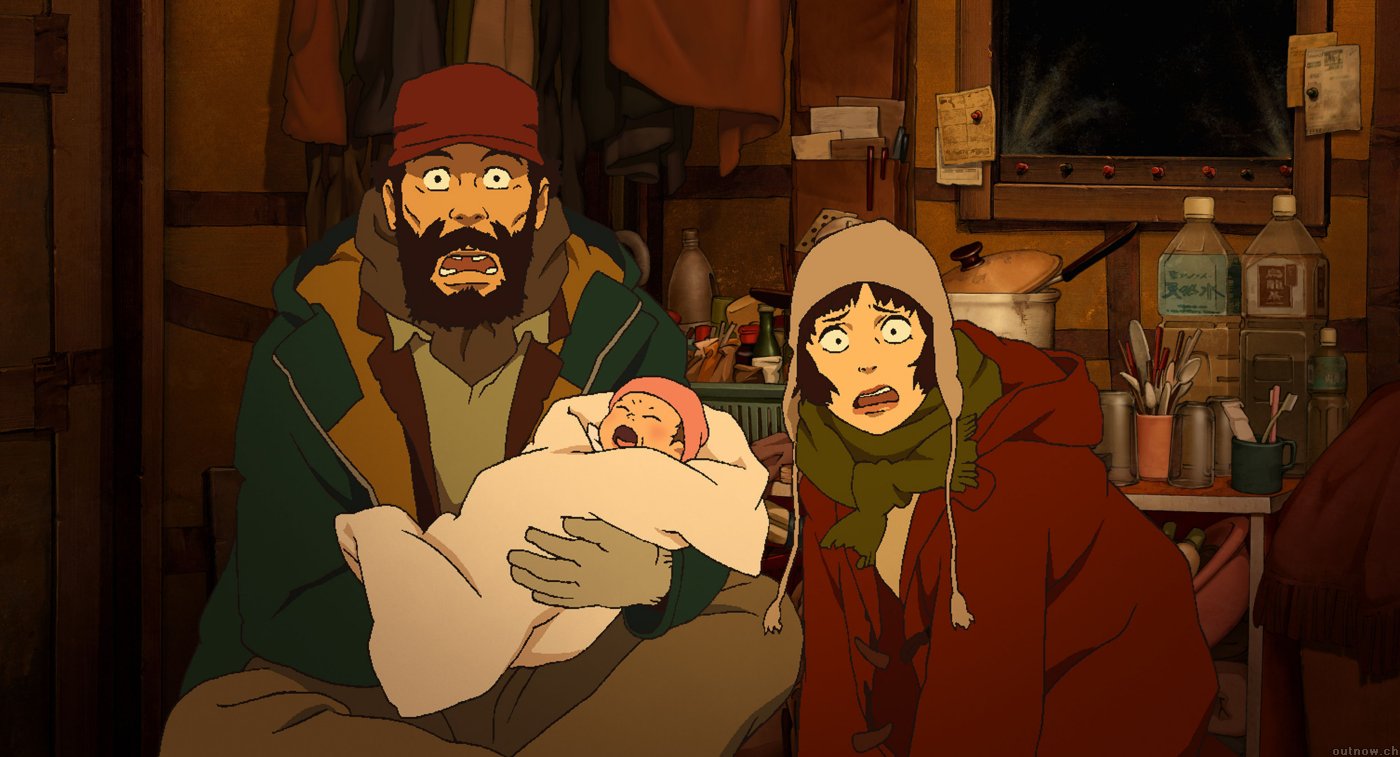14. The Secret World of Arrietty (Hiromasa Yonebayashi, 2010)
Studio Ghibli productions can generally engage a wide audience as most films don’t feature a classic villain, although they do touch on serious social or emotional topics. The main conflict of their movies typically derives from a clash between characters with opposite incentives. However, instead of contrasting a main adversary with a group of heroes, all figures have their own virtues and vice.
As one of the best Studio Ghibli productions, The Secret World of Arrietty is a charming anime for young and old alike. While the director of Arrietty is Hiromasa Yonebayashi, Hayao Miyazakicontributes as a scriptwriter, which results in many familiar elements. The central character herself is a Miyazakiesque heroine. The elfin girl, Arrietty is a Borrower, who violates the only rule of her kind when on her first journey into the outside world, she allows herself to be seen by the sick human boy, Shawn.
The strongest point of Arrietty is the representation of the everyday world as alien: from Arrietty’s family’s point of view, even humans with good intentions are dangerous due to their size, while the elfin girl opens up the boy’s eyes to a whole new wonderful universe under the floor.
13. Steamboy (Katsuhiro Otomo, 2004)
Katsuhiro Otomo was first introduced to anime lovers with Akira (1988), his visionary sci-fi, which made film critics and scholars take the genre seriously. Almost twenty years later, Steamboy was already known before its release for its high budget and extended production time. When it finally reached the cinemas, critics hailed it for its beautiful visuals achieved by 180,000 drawings and 400 computer-generated images, but it was also welcomed as a steampunk anime.
While Akira discussed the problem of a world where technology is omnipresent, Steamboy goes back to a time where humanity created the first machines. For Otomo, technology can never blend into nature peacefully, and the main conflict, as in Akira, derives from its potentially destructive quality.
12. The Place Promised in Our Early Days (Makoto Shinkai, 2004)
The Place Promised in Our Early Days is set in an imaginary post-war Japan divided into a Union-controlled North and the US-controlled South. The main weapon of the North is a tower, dominating the skyline as high as the human eye can see. Meanwhile in the South there is a girl called Sayuri who fell into an endless sleep, and her faith is intertwined with that of the tower.
The hypothetical war that caused Japan to divide hauntingly reminds us of the Second World War. Decades after, the distress of the war is still overshadowing the memories and lives of people, and the survival can only start if Sayuri’s friends Hiroki and Takuya – the new generation – find a way to shake off the nightmare and destroy the monstrous embodiment of the conflict: the tower on Ezo.
Haunting childhood memories and the longing for distant dreams symbolized by the skyline are recurring images of Makoto Shinkai’s anime, but the presence of a social consciousness is the most evident in The Place Promised in Our Early Days, making it a worthwhile watch.
11. Cowboy Bebop: The Movie (Shinichiro Watanabe, Hiroyuki Okiura, 2001)
The sci-fi thriller is set in the future when humanity spreads out to live on the various planets of the solar system. The bounty hunters aboard Bebop decide to hunt down the person responsible for the spread a new virus, and naturally, their quest involves many adventures, resulting in excellent action-packed scenes and smoothly animated fights: space fights and fistfights alike.
The feature film version of one of the most popular anime series includes everything that fans love about the twenty-six episode long series. Cowboy Bebop features the signature elements of many genres from western to sci-fi to gangster movies, which make it more Western in its atmosphere than other Japanese anime in general. Although strongly tied in to the series, Cowboy Bebop: The Movie is not only enjoyable for the fans of all twenty-six episodes of the show; it’s undoubtedly one of the best sci-fi anime movies on its own.
10. 5 Centimeters Per Second (Makoto Shinkai, 2007)
Animation can open a door to a world of fantasy inhabited by gods and mechanical demons, but not every anime invites the viewer on a journey into a universe beyond reality. 5 Centimeters Per Second is almost cruel in its way of sticking to reality, and that is exactly what makes it unique. While animation is usually action focused, 5 Centimeters Per Second often features images for their atmospheric value or crisp beauty instead of focusing on the space where the action happens.
The result is a nice example of the Deleuzian time image. The film, instead of featuring characters who are working to create a better situation for themselves, mainly focuses on time itself. With the story of the childhood lovers who got separated when they had to change schools, this anime offers three variations of the same situation at different points of time, without showing any possible solutions. If Deleuze’s film theory depicts a disillusioned post-war society, 5 Centimeters Per Second can be understood as the representation of the disheartened post-millennial youth.
9. Millennium Actress (Satoshi Kon, 2001)
Reality and fantasy intertwine in this epic Satoshi Kon story. Millennium Actress is a sentimental journey into the memories of Chiyoko Fujiwara, an elderly movie star who recalls the best moments of her life, career, and Japanese history as her film studio is shutting down. Unlike some other Satoshi Kon films (including Paprika from this list), this anime is not preoccupied with the oppressive images of the subconscious.
The memories guide the viewer into the world of a sensitive woman, haunted by the images of a lost lover. Chiyoko’s search for her lover which stretches from her youth into her elderly age is represented as a hunt in her several films through which the history of Japan and Japanese cinema comes to life. All of this is rendered personal by Chiyoko’s memories, which become increasingly colorful as they reach the present.
A third layer is added to this in the character of Genya, the cameraman, who is recording Chiyoko’s interview. While this places the film close to Perfect Blue, where the question of gaze and spectatorship becomes central, Millennium Actress is more positive than other Satoshi Kon films. Here the dark side of the mind remains in the shadow, and the desired key releases the graceful pictures of the media industry.
8. Tokyo Godfathers (Satoshi Kon, 2003)
Satoshi Kon is not the director one would associate with tales of wonders. However, Tokyo Godfathers is exactly that, yet, it is a signature Satoshi Kon production from the first minute until the very last. A compulsory Christmas movie for all anime lovers, Tokyo Godfathers is about three homeless people who come across an abandoned baby on the streets of Tokyo on Christmas Eve and decide to search for the child’s mother.
As with most anime that are set in an imaginary or real metropolis, the big city is depicted as an inhuman, unsettling space. However, a chain of coincidences, which occurs during the quest of the three unlikely characters, proves that wonders can happen even at the dimmest places. Apart from the visuals, Satoshi Kon’s style is most apparent in the subtle blending of fantasy elements and reality with meticulous attention to constantly keeping the story on the borderline of the credible.
